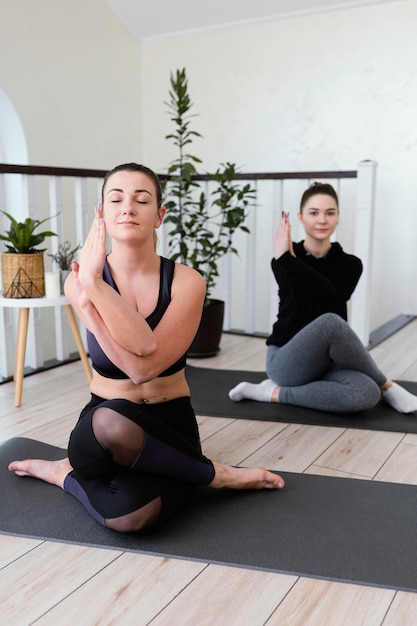
A yoga body isn’t just about being flexible; the practice offers benefits like improved memory, heart health, and bone strength, as noted by Anna Magee.
Yoga has become hugely popular, with British people spending £790 million each year on yoga-related expenses. While modern adaptations of yoga, like rage or naked yoga, and even poses on paddle boards or horseback, are gaining attention, scientific evidence of its benefits is also expanding.
Researchers at UCLA found that a three-month yoga and meditation course was more effective than memory exercises in minimizing age-related brain impairment. Another study noted that yoga could improve sleep for breast cancer survivors.
Lucy Edge, a 53-year-old former advertising executive, turned to yoga to combat a deep depression instead of using prescribed antidepressants. She took six months off work, traveled to India to learn yoga, and returned feeling happier and more content, even though she didn’t achieve the stereotypical “yoga body.” Lucy has written three books on yoga and created Yoga Meds, a section on her website listing over 300 clinical trials that highlight yoga’s health benefits, including for conditions like arthritis, insomnia, and obesity.
If you’ve been relying on crossword puzzles or Sudoku for memory training, it might be time to add yoga to your routine. UCLA research compared the effects of 12 weeks of memory exercises and a course of yoga and meditation on adults over 55. The participants who practiced yoga not only improved their spatial and visual memories but also experienced reduced depression and anxiety and increased resilience to stress.
To start, there’s no need for intense poses. In the study, participants practiced Kundalini yoga once a week, which combines breathing techniques, meditation, and some chanting of mantras. They also did 20 minutes of Kirtan Kriya, a meditation involving chanting, hand movements, and visualization of light.
For heart health, evidence suggests yoga might be as beneficial as conventional exercises like walking. A 2014 review in the European Journal of Preventative Cardiology noted yoga could lower heart disease risk. Stress reduction through yoga can decrease blood pressure and heart rate, thus lowering the likelihood of blood clots.
For better mental and emotional health, yoga’s benefits are well established. Practicing yoga can help with anxiety, stress, and depression, which are common among individuals who have experienced cardiac events. Previous research indicates yoga can improve blood pressure, cholesterol, and weight management, which are all vital for heart health.
Beginners can try gentle yoga poses or Restorative yoga, which involves supported postures held for up to 12 minutes to help the nervous system relax.
Yoga is also recommended for back pain, as suggested by NICE guidelines. Physiotherapist and yoga teacher Sarah Shone incorporated yoga into a rehabilitation program for back pain with an 87% success rate. Yoga can also prevent incontinence by strengthening pelvic floor muscles and increase bone density through weight-bearing exercises.
When starting yoga, inform your teacher of any health problems and choose a gentler style like Hatha or Iyengar yoga. For specific conditions like back pain, consult your doctor to see if you’re eligible for subsidized yoga courses.
Good yoga gear can enhance your experience. When choosing a mat, consider where it will be used—at home or for transport. Look for a mat that offers durability, portability, and the right length and thickness to protect your joints.
An example of a quality mat is the Elephant Cork Yoga mat from Valka Yoga, which is eco-friendly, made from organic cork and natural rubber, and offers excellent grip even when wet. It also comes with a carry strap and offers a satisfaction guarantee and a one-year replacement warranty.
For added support, try a yoga block. A cork block, although heavier than foam, offers better stability and grip. For those less flexible, yoga props like blocks help with difficult poses.
Different styles of yoga cater to various needs:
– Yin or Restorative yoga: Relaxing classes under candlelight with supportive props.
– Vinyasa Flow: Energetic and dance-like sequences linking movements to breathing.
– Iyengar yoga: Precise, alignment-focused yoga using props.
– Anusara yoga: Alignment-focused, flowing movements often set to music.
– Yoga Therapy: Yoga designed to help heal injury or illness, practiced by specially trained teachers.

